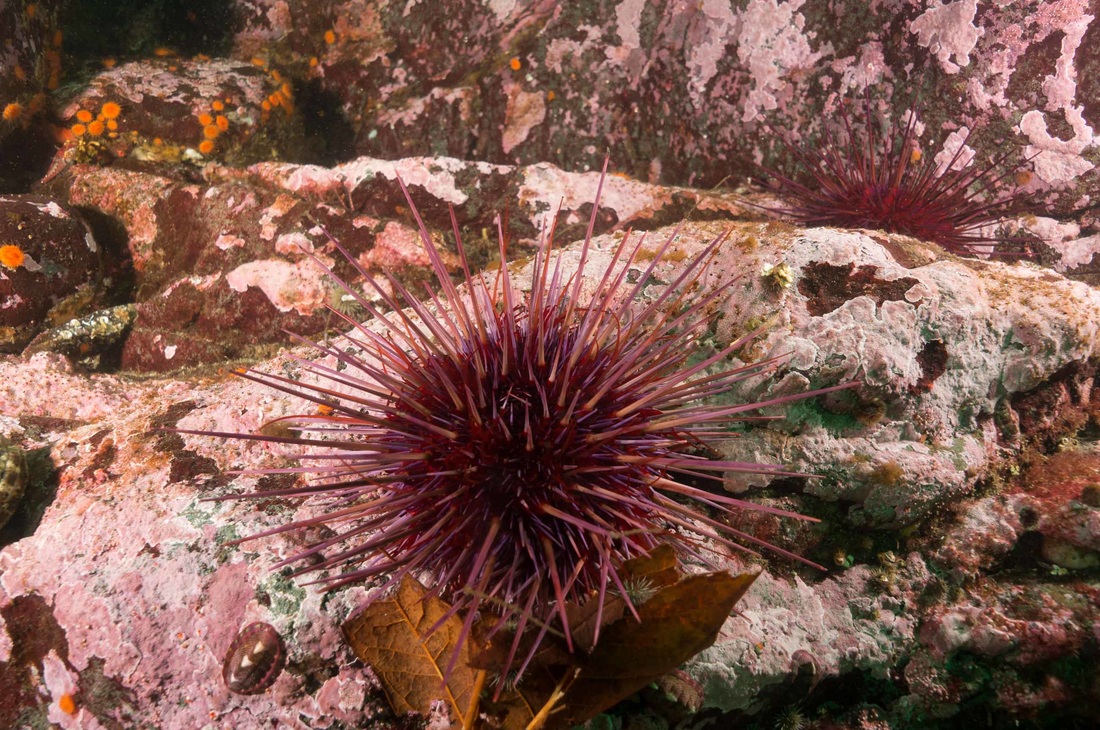Too many purple sea urchins and not enough bull kelp continues to stymie California’s red urchin dive industry. Since the one-two punch of El Niño and the warm-water blob in 2016, bull kelp beds have declined by 93 percent from previous years, according to a study by the California Fish and Game Commission.
Kelp is the prime forage of urchins, and the more plentiful the kelp, the fatter they fill with prime uni. The kelp shortage has confined divers to deeper waters and concentrated their efforts in small areas where kelp beds remain.
“We call it compaction,” said Tom Trumper, a diver and owner of Pacific Rim Seafoods, in Fort Bragg.
To that end, the commission implemented a reduction in the dive fleet, which hovers at around 300 permit holders. The current plan aims to decrease the fleet to 150 divers, yet allow for new entrants to the fishery.
At the same time, most areas remain plagued by purple urchins, which compete with red urchins for the remaining kelp and algae.
“The purp explosion is still devastating the grounds,” said Trumper. “There are hundreds, maybe thousands per square meter.”
Trumper said the industry received a grant that pays divers to gather and eradicate the purple urchins in some areas.
The red urchin harvest tallied up to just 5.3 million pounds in 2016, a record low since the inception of the fishery back in the 1970s, then rebounded slightly at 5.4 million pounds in 2017.
“Last year was a little bit better than the year before,” said Trumper.
With high quality uni in short supply, ex-vessel prices for the critters can’t help but increase. Prices since 2014 have hovered around 76 cents to 84 cents a pound, but data with PacFIN for 2017 puts average prices at $1.53 per pound for urchins delivered in 2017 and $1.46 for urchins delivered this year.
That’s the average, said Trumper, adding that an increasing number of divers have begun self-marketing, which drives their ex-vessel prices up to $2.50 per pound.
Though in decades past, Japan was the mainstay market for uni, global demand continues, and the predominance of product in recent years has wound up in Dallas, New York, Chicago, Miami and San Francisco.







